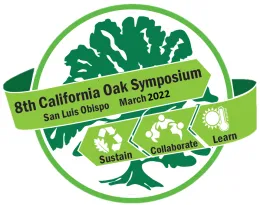The Present: Multiple Stressors Create an Inflection Point for Oak Sustainability

Tedmund J. Swiecki and Elizabeth A. Bernhardt, Phytosphere Research
The present condition and current prospects for California’s native oaks have been shaped by an accumulating and accelerating array of human-induced changes. The current extent, stand structure, and health of oak woodlands have been shaped by a dizzying array of changes including clearing, livestock grazing, changes in fire frequency and behavior, replacement of understory native plants with a variety of invasives, the introduction of destructive exotic insects and pathogens, and altered temperature and moisture regimes driven by climate change. Many of these factors interact and the combined stress they pose on both oaks and their supporting ecosystems increasingly threatens the sustainability of native oaks and the habitats where they reside. While past impacts cannot be changed, the present represents an inflection point. Future outcomes for oaks and their associated habitats will be affected by ongoing action or inaction to address these factors. Action is needed at multiple levels – international, federal, state, and local – to curtail the movement of exotic pests and pathogens that damage and kill oaks. Widespread oak mortality caused by Phytophthora ramorum (the sudden oak death pathogen) and Goldspotted Oak Borer (Agrilus auroguttatus) has already irreparably altered oak habitats in northern and southern California, respectively. While these and many other introduced invasives spread naturally from points of introduction, both initial introductions and the largest jumps in distribution are due to human-mediated movement of infested or infected host materials, such as firewood and nursery stock. Effective coordinated efforts to prevent movement of destructive exotic agents are needed to both prevent new introductions and minimize the spread of agents already present in parts of the state. Many introduced pests and pathogens are not visible or are hard to detect when they are transported, so a systemic awareness of the threats posed by these exotic agents needs to be recognized at all levels of oak management. Exotic root-rotting Phytophthora pathogens are very common in nursery stock grown under typical nursery conditions, and research has documented that these destructive pathogens have been moved into oak habitats though habitat restoration plantings as well as landscape plantings at urban interfaces. This risk can be avoided by planting via direct seeding with appropriate phytosanitary precautions and conserving existing regeneration. Effects of pathogens and other biotic agents interact strongly with environmental factors that stress oaks. Many biotic agents, both introduced and native, are much more damaging to stressed oaks, and diseases such as root rot can exacerbate water stress by reducing uptake when water is present. Ongoing climate change has increased temperature and moisture extremes, resulting in record drought and heat conditions. These conditions may push the environmental limits for entirely healthy oaks and can readily kill oaks that are already compromised by biotic agents. Oaks are most likely to be pushed beyond their limits of adaptation at the extremes of their ranges. Hence, the restoration of oak cover in more mesic parts of their historic range, much of which was cleared and converted to exotic-dominated grasslands, will be important in maintaining native oak species and habitats.
